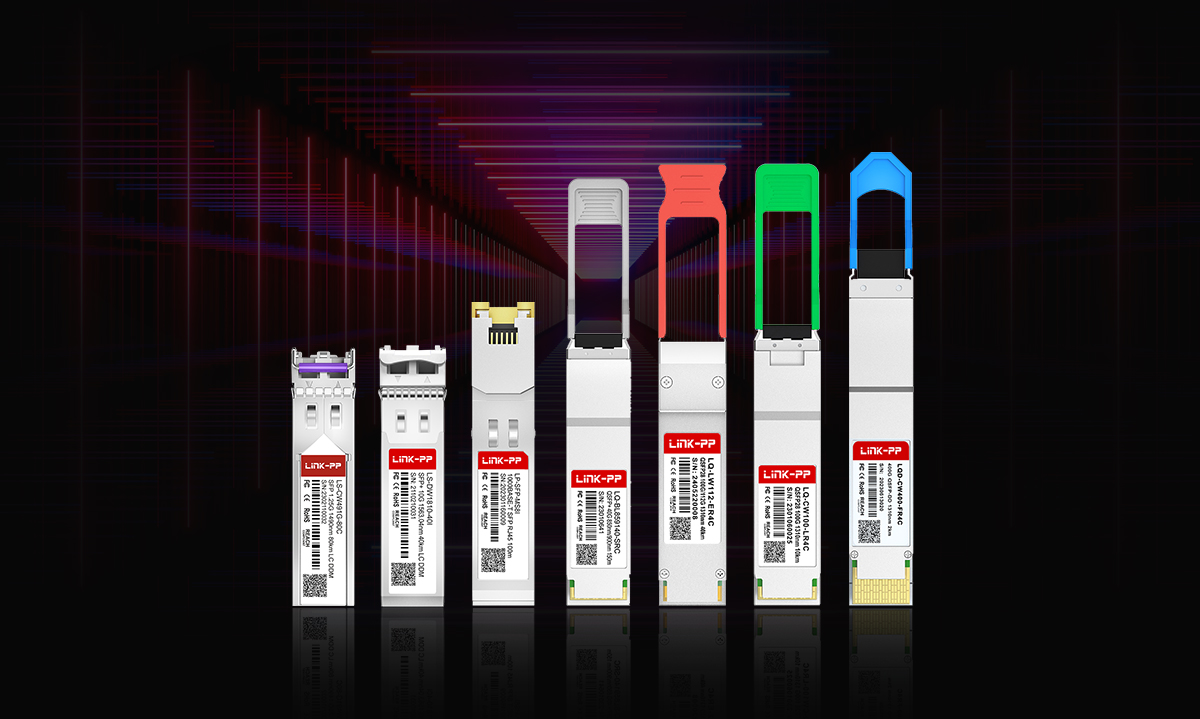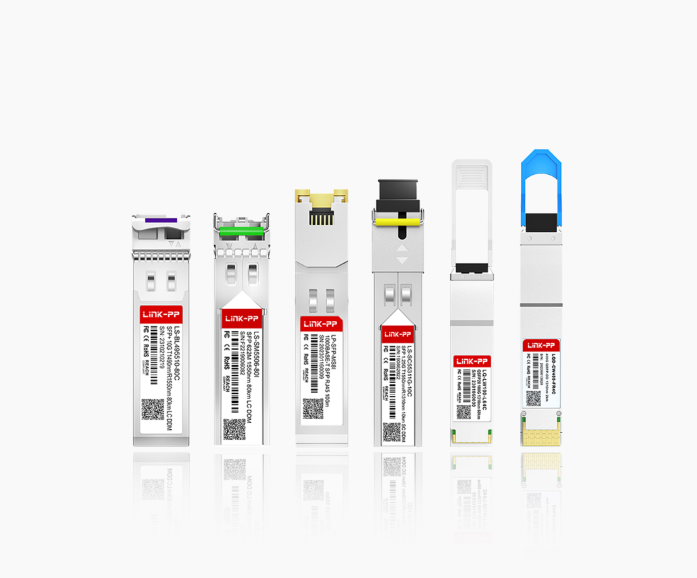
In the era of cloud computing, AI, and real-time analytics, the traditional three-tier data center network is buckling under pressure. To achieve the low latency, high bandwidth, and effortless scalability required by modern applications, architects have turned to the spine-leaf fabric topology. But what truly brings this elegant architecture to life? The answer lies in the unsung heroes of the data center: high-density optical transceivers.
This article delves into why these tiny components are the critical linchpin for building a robust and scalable data center network.
➤ Key Takeaways
Learn about spine-leaf architecture. It makes network paths simple. You can expand easily by linking each leaf switch to all spine switches.
Pick the right switches and ports. High-density switches use less space. They give more bandwidth. This helps your network grow well.
Think about future growth. Leave some ports open. Use modular switches to add more devices later. You can add connections as your needs change.
Use high-density optical transceivers. They boost bandwidth and cut down cable mess. Upgrades are easier. Your network stays fast and works well.
Use best practices when setting up. Keep cables neat. Watch how your network performs. Make sure everything works together. This keeps your network strong and able to grow.
➤ What is a Spine-Leaf Architecture?
Before we dive into the hardware, let's clarify the foundation. A spine-leaf architecture, also known as a Clos network, is a two-tier design that eliminates the bottlenecks of legacy hierarchical models.
Leaf Switches (The Access Layer): Every leaf switch connects to every spine switch. These are the access points where servers, storage, and other endpoints connect to the network.
Spine Switches (The Backbone): The spine switches form the core of the network. Their sole purpose is to interconnect all leaf switches.
This design ensures that any server can communicate with any other server in just two hops—through a leaf, to a spine, and down to another leaf. This results in predictable low latency and a non-blocking fabric where bandwidth can be scaled simply by adding more spine or leaf switches. For organizations looking to implement a future-proof data center design, this topology is no longer optional; it's essential.
➤ The Imperative for Scalability in Modern Data Centers
The driving forces behind the shift to spine-leaf are relentless. Workloads are becoming more dynamic, and east-west traffic (server-to-server communication within the data center) now dominates north-south traffic.
Key drivers include:
Hyper-Converged Infrastructure (HCI): Demands high-bandwidth, low-latency connections between nodes.
Artificial Intelligence & Machine Learning: AI/ML clusters require massive, uninterrupted data flows between GPUs.
Big Data Analytics: Processing enormous datasets involves constant communication between computing and storage nodes.
A scalable network isn't just about adding more switches; it's about ensuring the physical layer—the cabling and transceivers—can support that growth without a complete overhaul. This is where the choice of optical transceiver becomes a strategic decision.
➤ The Backbone of Connectivity: High-Density Optical Transceivers
The spine-leaf architecture's beauty is its simplicity, but its viability hinges on the interconnections. With each leaf switch connecting to every spine switch, the number of physical ports and cables grows exponentially. This is where high-density optical transceivers prove their worth.
They are critical for several reasons:
Port Density and Scalability: High-density transceivers (e.g., QSFP-DD and OSFP) pack more bandwidth into a smaller form factor. A single switch slot can handle more connections, allowing you to add more spine or leaf switches without increasing the physical footprint.
Bandwidth Requirements: As leaf switches aggregate traffic from numerous servers, the uplinks to the spine must handle immense bandwidth. Modern transceivers supporting 100G, 400G, and now 800G are mandatory to prevent bottlenecks.
Power and Cooling Efficiency: Newer transceivers are designed for better power efficiency per gigabit. In a fabric with hundreds or thousands of these modules, optimizing power consumption and heat dissipation is crucial for operational expenditure (OpEx).
Flexibility and Reach: Optical transceivers allow for a mix of cable types (Single-Mode Fiber for long reach, Multi-Mode Fiber for short reach) and distances, providing the flexibility needed in diverse data center environments.
Choosing the right transceiver is not just a procurement task; it's a core part of optimizing data center performance.
➤ A Deep Dive into Optical Modules: Powering the Fabric

To truly appreciate their role, we need to look closer at the optical modules themselves. An optical transceiver is a device that both transmits and receives data, converting electrical signals from the switch into optical signals for fiber optic cables, and vice-versa.
Key Types of Transceivers in a Spine-Leaf Fabric:
Form Factor | Typical Speeds | Common Use in Spine-Leaf | Key Advantage |
|---|---|---|---|
SFP28 | 25G | Server to Leaf connections | Cost-effective for access layer |
QSFP28 | 100G | Leaf to Spine uplinks | High density, widely adopted |
QSFP-DD | 400G, 800G | High-density Spine to Leaf | Backward compatibility, future-proof |
OSFP | 400G, 800G | Next-gen spine cores | Higher power for demanding optics |
When selecting modules for a scalable fabric, network architects must prioritize interoperability, low power consumption, and diagnostic capabilities like Digital Diagnostics Monitoring (DDM). This is where partnering with a reliable technology provider makes all the difference.
For instance, LINK-PP offers a suite of high-performance, compliant optical transceivers engineered for demanding spine-leaf environments. A standout solution for many deployments is the LINK-PP 400G-QSFP-DD-DR4 transceiver. This module is ideal for high-density spine interconnects, supporting 400G over 500m of single-mode fiber with exceptional signal integrity and low power draw. By integrating such high-density QSFP-DD modules, businesses can effectively reduce network latency and build a robust foundation for growth.
➤ Best Practices for Implementation
Building a successful fabric goes beyond just buying the fastest components. Here are some key considerations:
Plan for Growth: Design your initial fabric with at least 30-40% spare port capacity on both spine and leaf layers to accommodate future expansion.
Standardize on Transceivers: Using consistent, vendor-agnostic modules from manufacturers like LINK-PP simplifies sparing, reduces compatibility issues, and lowers costs.
Embrace Automation: As the fabric scales, manual management becomes impossible. Use network automation tools to manage configurations and monitor transceiver health across thousands of links.
Focus on Cable Management: A high-density fabric means a high-density patching field. Invest in proper cable management solutions to ensure good airflow and ease of maintenance, which are critical for data center efficiency.
➤ Conclusion: Future-Proofing with the Right Foundation
A scalable spine-leaf architecture is the definitive blueprint for the modern data center. However, its performance and scalability are directly dictated by the quality and capability of the optical transceivers that form its connective tissue. By prioritizing high-density optical transceivers from the outset, organizations can build a network that is not only powerful today but also agile enough to embrace the technologies of tomorrow.
Investing in reliable, high-performance components from industry leaders like LINK-PP is not a mere accessory—it's a strategic imperative for building a truly scalable and efficient data center network. As you plan your next network upgrade, remember that the path to a seamless, high-speed fabric is lit by fiber optics.
➤ FAQ
What is a spine-leaf fabric?
A spine-leaf fabric connects servers and switches in a data center. Leaf switches link to spine switches. This setup gives you quick data paths. It also makes it easy to add more parts.
Why should you choose high-density optical transceivers?
High-density optical transceivers help you connect more devices in less space. You get faster speeds and save room in your racks. Your network can support more users and grow easily.
How do you plan for future network growth?
You leave some ports open for later. You use modular switches that let you add more. You pick cables that work for upgrades. You watch your network traffic and add more connections when you need them.
Tip: Always check if your switches work with new transceivers before you buy them.
What problems can high-density optics solve?
Problem | Solution |
|---|---|
Cable clutter | You need fewer cables |
Limited rack space | You get more connections |
Slow upgrades | You can swap transceivers |
High-density optics help with space, speed, and upgrades.



